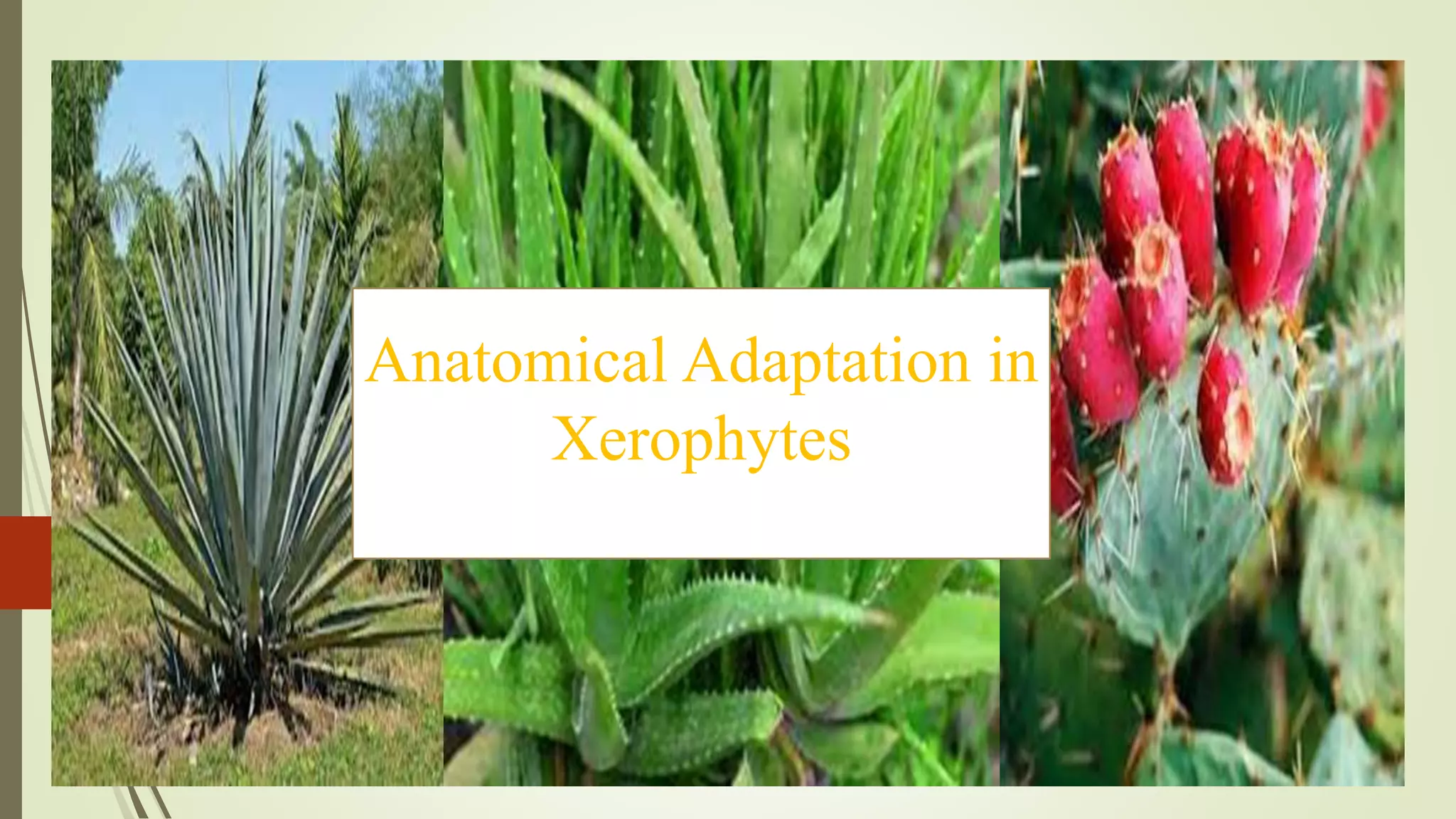Xerophytic plants have several anatomical adaptations for surviving in dry conditions:
1. They reduce water loss through thickened cuticles, sunken stomata, and reduced leaf surface area.
2. Many develop thick, fleshy stems and leaves that store water as well as deep, extensive root systems to absorb water from below ground.
3. Additional adaptations include multiple epidermal layers, thickened cell walls, abundant hairs and trichomes, rolled or cylindrical leaf shapes, and water storage tissues to retain moisture.











